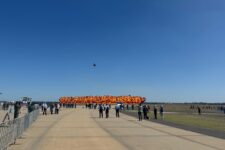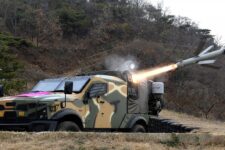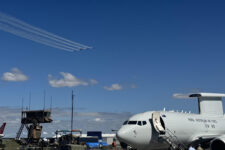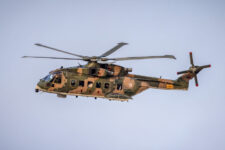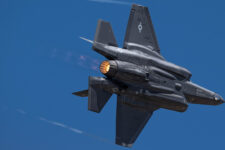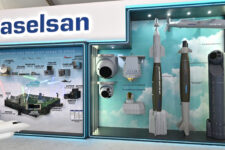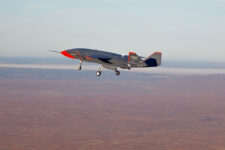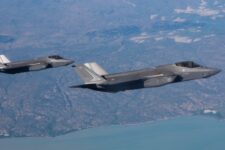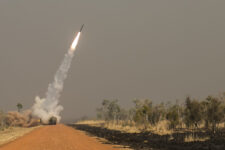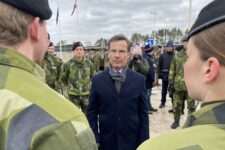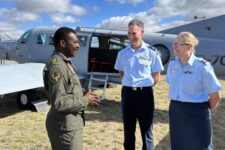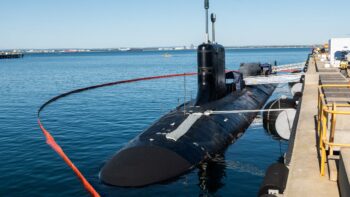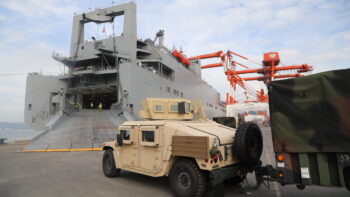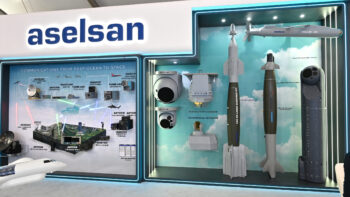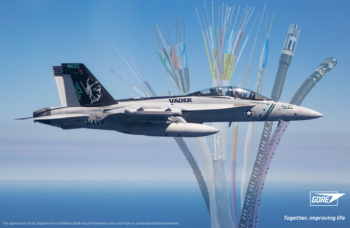
The Next Generation Air Dominance (NGAD) program envisions different types of drones teamed with a sixth-generation fighter. Northrop Grumman image.
WASHINGTON: Air Force Chief of Staff Gen. CQ Brown says the service is seriously considering building a fighter fleet with more drones than piloted aircraft.
In response to my question during today’s McAleese defense conference about whether he sees the balance of piloted and uninhabited combat aircraft shifting toward drones in the future, Brown said simply: “I do.”
Such a shift in fleet structure is something the service has looked at in its Futures Game, led by Lt. Gen. Clint Hinote, deputy chief for requirements. That war game was held last fall. (Colleague Valerie Insinna detailed the China-focused 2030 scenario last month.)
“Part of our analysis in that war game was to take a look at the mixture of manned platforms and unmanned platforms,” Brown said. “So, what does a future fighter squadron look like, you know, how many airplanes does it have versus how many unmanned platforms does it have? And then, how do you train differently as you do this?”
He doesn’t yet “have the answer what that mix might be,” Brown said. But, he stressed, he is laying the ground work today to guarantee the service has the ability to make such a shift in the future if it so chooses is absolutely necessary.
“I want to really put a mark on the wall to start driving ourselves in that direction,” he said, “to really start asking ourselves this question. And as we do the R&D today, we’re actually building out these capabilities — so we don’t get five to 10 to 15 years from now and go, ‘God, that would have been a really good idea.’ We got to start doing some of those things today and plan some of those seeds.”
Brown elaborated that the ongoing combat air study is an “internal document” for his own use, primarily to be used to build the fiscal 2023 budget. “And it’s hard,” he stressed, because the study — which involves the Joint Staff and DoD’s Cost Assessment and Program Evaluation (CAPE) office — is not only looking at the capabilities and aircraft the Air Force will pursue, but also at air combat needs across the services.
Further, Brown said: “I told the staff that I don’t know that I’ll come to a complete answer” on the exact future mix, because “the facts and assumptions based on the threat will change over time.” Instead, he explained, “I’m really looking for a window of options.”
But the end goal, Brown said, is to move from the current fighter fleet structure made up of seven different types of aircraft, “down to about four,” or “four plus one” counting the venerable A-10 ground attack plane that he noted is going to be around for “a while.” Included in that four, he said, will be:
- The Next Generation Air Dominance (NGAD) family, which under current plans will include both a sixth-generation, piloted fighter jet plus an as yet unknown number of drones capable of teaming with the new fighter;
- The Lockheed Martin built F-35A fifth generation fighter, which Brown again called “the cornerstone” of the future fleet — but which has been fixed firmly in the DoD crosshairs for a potential reduction from the currently planned 1,763 tails;
- Boeing’s F-15EX Eagle II, which is making its debut in the ongoing Northern Edge exercise led by Indo-Pacific Command; and
- The F-16, and eventually, something new to replace it. “Whether that will be more F-35s or something else” is a decision Brown said doesn’t have to be made for “six, seven, eight years.”
The sights of Avalon Air Show 2025: Day Three [PHOTOS]
An on-the-ground look at the 2025 Avalon Air Show in Australia.
